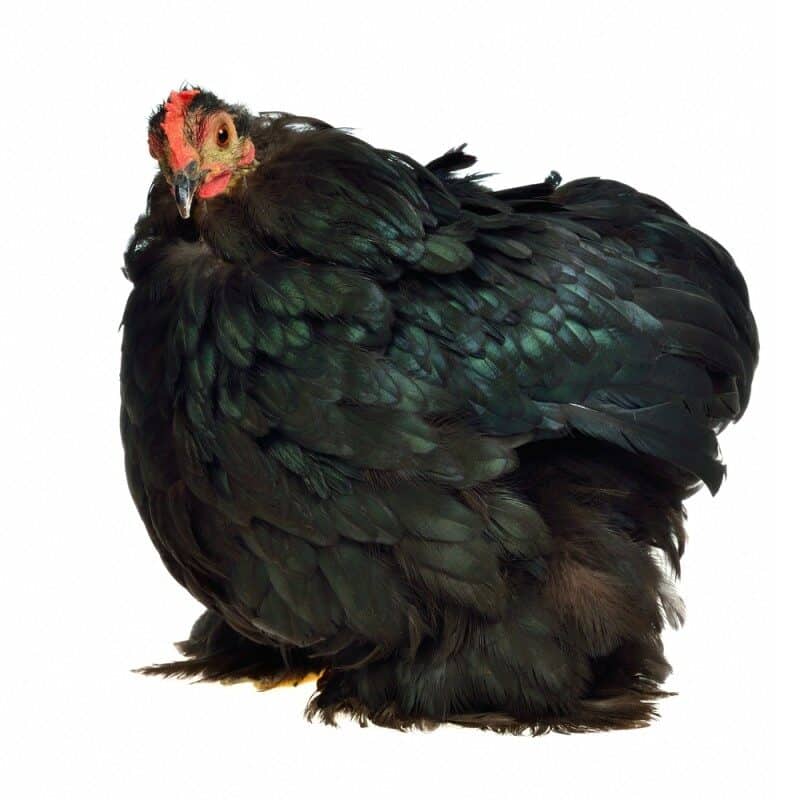This post was most recently updated on March 10th, 2021
Backyard chickens are extraordinary. You get to pick farm-fresh eggs every day, get good manure for your garden, and make great pet friends. You don’t want to miss out on all this goodness, but with 100s of to choose from, it can get overwhelming. This guide will help you choose the for your backyard.
Please read: This information is provided for educational purposes only and is not intended to treat, diagnose or prevent any disease. We encourage you to make your own health care decisions in partnership with a qualified health care professional.
This post contains affiliate links, this means at no extra cost to you, we make a commission from sales. Please read our Disclosure Statement
What To Consider When Choosing a
Your backyard can play host to a variety of chicken breeds for meat, eggs, or to enjoy some company. Just because you have full size chickens, it does not mean that you cannot also have some smaller chickens as well.
However, it’s essential to have the right criteria for picking birds. Choose the right small breed for your situation and enjoy some tiny egg production while also having a pet chicken!
When you are buying breeds to build your backyard chicken flock, ask the right questions. Here are some of the critical considerations:
Climatic conditions
Different breeds adapt differently to temperatures. Some prefer heat, while others do better in the cold. So you want to choose species that can adjust to your particular climate.
Disregarding the environment will affect the birds, sometimes leading to death. Chickens with more prominent combs are usually more resistant to heat than their bigger cousins with smaller combs.
Some chickens have super fluffy and they can overheat easily.
Noise level
While all birds make noise, some top the charts, thus, if you don’t live on vast acres of land, it’s a good idea to pick the less noisy birds. Bantam chickens tend to be quieter than their full sized counterparts, and some even manage to keep bantam roosters in town!
Some chickens produce more eggs than others. Hence, if you’re looking to get lots of eggs, you must consider how many eggs the bird lays on average.
Additionally, evaluate how long the takes until it starts laying and how many active laying years it will give you. Some breeds will mature faster, but will only lay for a few years, whereas others will take longer to mature but they will lay for many many years.
Temperament
You wouldn’t want your backyard to turn into a chicken war zone – chickens pecking each other or people- especially if you have small children. Going for breeds that are mild-mannered or playful is a good idea.
Attractiveness
Do you fancy waking up to beautiful displays of nature every day? Choosing attractive breeds will make your backyard more appealing. Plus, it will turn your chicken breeding into a beautiful hobby. Fancy haired chickens like the or something sleek and cute like the will add some interest to your flock.
This goes for the eggs as well. Most breeds of chickens will lay a distinct color of eggs, so much so that you will be able to work out what eggs come from which out of your backyard. You may want to incorporate birds with exotic just for the wow factor.
Space
Some breeds of chicken don’t do well in confined spaces. If space is an issue, it helps to pick species that adapt better to small spaces.
RELATED POST: How often should you collect your eggs
RELATED POST: 5 chickens that lay coloured eggs
10 For Your Backyard
We’ve narrowed down some good options you can add to your backyard.
1. Silkie Bantams
Silkie Bantams are easy-going and friendly. Plus, they are silkie soft and super cuddly, they make for good pets.
What’s more, they do well both in confinement or as free rangers. They are on the lower end of the scale with up to 3 eggs per week.
However, they lack in they make up for in beauty; with a colorful array of plumage, these birds are a marvel to look at. Silkies don’t mind most climatic conditions and they make wonderful mothers.
2.
Cochin Bantams are plump, cute, and fluffy birds. They are a great addition to your backyard because they are docile and very relaxed. What’s more, they do moderately well in most climates.
Their is fair; they will lay a minimum of two eggs weekly. This of chicken makes a very good lap chicken. Did I mention how fluffy they are?
Furthermore, these ornamental birds will have your backyard looking like a queen’s parade. Their regal-looking plumage comes in black, silver-laced, gold-laced, lemon blue, and so many other colors. They will grow to about 32 oz at most, but their make them look bigger.
3. Sebright
The Sebright is a very small . It’s known as a ‘‘ since it has no corresponding larger cousin.
Because the birds are so small, they do fly really well. Therefore, they are usually kept in confinement, mostly for show, and don’t roam around freely.
Sebrights tend to be less productive when it comes to eggs. They average about an a week.
If you are a beginner, it is recommended that you hold off on the Sebrights until you are more experienced as they are usually on the higher end of the maintenance scale.
4. Bantams
Bantams are among the most common backyard chickens for small spaces. These cold-hardy birds well and don’t need a lot of maintenance.
They fit perfectly with other breeds (and your family) because they are docile and calm. Bantams even respond positively to petting and will jump at the chance of a cuddle so they make awesome feathery pets.
Moreover, they get points for consistency. The birds will lay four small eggs every week all year round. These are a tiny version of the popular and they bring with them the personality and laid-back qualities.
Just like the larger sized Plymouth, these black and white beauties are not so fussy. They do well both in confinement and free-range and will lay a creamy light brown to .
5. Easter Egger
The Easter Egger is a smaller version of the hybrid variety that lays colorful eggs, commonly green or blue. But they can surprise you with some purplish, pink, or orangey-brown eggs.
These birds are the larger of the mini breeds growing up to 3 pounds. In terms of climate, Easter Eggers are suitable for both cold and hot temperatures. In addition, they take confined spaces well, but they are still fine roaming in the yard.
Easter Eggers will give you approximately four colorful small eggs each week and they make a wonderful addition to your .
6. Wyandotte
This are a 3-pound miniature version of the standard . They are usually calm, but they are a bit on the introverted side. The birds tend to be quite detached and aren’t too eager for cuddles.
The most popular, the are decorative, beautiful birds. But they also come in a variety of other colors. Additionally, they are extremely productive layers; the birds will give you approximately five mini brown eggs each week.
Additionally, they do well in colder climates; when it’s hot, they tend to need extra care. In terms of confinement, they prefer to roam around but won’t complain if they are caged.
7.
Like the larger version, these tough nuts do well in most climates and are low maintenance. Again, they are friendly birds and will fit right in to your .
They aren’t too picky about the space arrangements and can thrive in both confinement or let loose.
When it comes to the looks, Rhode Island Bantams are mostly plain chestnut red. But they more than make up for it in friendliness. They love to be held or fed off your hand. You will even have a little mini follower around the yard. Plus, they’re great with kids.
Rhode Island Reds are also productive layers. They will lay not less than four miniature eggs per week. Overall the is a practical addition to your small backyard coop.
8. Sussex
The is a small, beautiful speckled with a warm demeanor. It is an explorer by nature, so it loves foraging and following you around.
It’s not an aggressive . And it’s quite a chatter who loves to talk, but it’s not too noisy. These birds adapt better to cold climates and they don’t fare well in the heat.
They are quite productive, too, giving 4 to 5 eggs each week. Their eggs are relatively large for a .
9. Sablepoot (booted )
The Sablepoot will bring uniqueness to your backyard. That’s because they have so many on their legs. The looks like its wearing boots, this is the reason they are also called booted bantams.
Apart from their leg booties, they are also quite decorative. Their speckled come in several different colors, including brown, lemon, and lavender.
The birds are relatively low maintenance and easily tamed. They love when you fuss over them and have a very easy-going demeanor and they make good pets.
Sablepoots can produce, on average, three eggs per week. The birds are gentle with other breeds. However, you have to watch out for them; they tend to be bullied in larger groups.
10.
Bantams are fluffy, good looking birds on the larger side of the bantams. They weigh in at around three pounds. Despite their size, they are passive and blend well with other breeds. In fact, you shouldn’t mix them with aggressive birds since they can be harassed.
They are calm (and cuddly). On top of that, buff bantams don’t make much noise. They will lay 4 to 5 small every week.
Buff Orpingtons are the perfect addition to the backyard garden; more eggs plus lots of fluffy fun for the kids. They are great to keep in your flock if you need a broody hen, as they go broody easily, will usually sit well and make wonderful mother hens of even full sized eggs, despite them being a miniature chicken.
Can I Get Different Breeds At One Go?
Some mix and match will give you more variety and a wonderful rainbow basket. You’ll love all the different characters and chatter.
Bottom line, your backyard will be a vibrant mix of coos and flaps. However, just like any living arrangement, there will be a few tiffs along the way.
Therefore, if you are an absolute beginner, start with one . Then gradually add more, taking care to introduce the chickens carefully each time.
We hope this list of for your backyard helps you get some good candidates for your coop. Use the considerations as a checklist for each ‘s compatibility, and enjoy your chickens!
What small chicken breeds do you have at your place? Share your chicken experiences with me in the comments below!
Please pin and share with your friends.
















